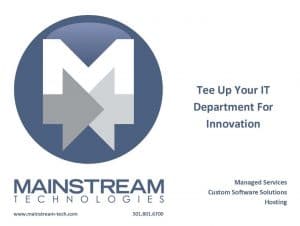 ‘Business Technology’ (BT) is defined as the technology dedicated to win, serve and retain customers. It’s expected that 40% of all technology spending in 2016 will be dedicated to business technology.
‘Business Technology’ (BT) is defined as the technology dedicated to win, serve and retain customers. It’s expected that 40% of all technology spending in 2016 will be dedicated to business technology.
The CIO’s role is evolving almost as fast as technology is. There’s more pressure than ever to demonstrate quick successes while keeping the long-term in mind. The CIO role is broadening from strictly focusing on the ‘nuts and bolts’ of IT to one that is tuned to the needs of the business stakeholder and customer. Since BT will consume such a large piece of the overall budget, it’s in the CIO’s interest to cultivate a collaborative and responsive environment with business stakeholders.
One way to do this is to realign the IT budget to better meet the needs of the business, accommodate shifting requirements and encourage innovation.
A typical IT budget could look like this.
- Tech MOOSE (Maintain and Operate the Organization, Systems, and Equipment) can generally run about 72% of the overall IT budget. It includes the non-discretionary expenses that are required to keep the department running and includes:
- Ongoing operations and maintenance
- Capital investment to replace old systems and expand capacity
- Deliverable-oriented new projects (traditional new IT-centric projects) can take up the remaining 28%. These IT projects are well defined and add new features and functionality to streamline management and operations.
Recognizing that the business needs to change and change quickly at times, CIOs may consider adjusting their budget by adding one or more categories.
These new categories could be:
- Outcome-oriented new projects – Outcome-oriented projects are originated by the business with a direct goal of impacting the bottom line.
- The outcome is defined, but the deliverable(s) are left to be defined through agile development[1].
- The initial funding is budgeted, with additional funding available as needed
- Tech-steering committee meets periodically to review progress toward an outcome and determine what additional funding is needed.[2]
- Innovation Funds – The innovation fund is a small pool of money assigned to the CIO for discretionary experimentation. It gives the business the opportunity to stand up an idea and see if it has merit.
- The CIO works with business stakeholders to identify needs and reasonable opportunities.
- The results are reviewed by a tech-steering committee.
- Business-empowered application refresh (BEAR) funds – Recognizing that business challenges are evolutionary and that software must adapt, BEAR funds are set aside and dedicated for business units to update their application portfolio.
- Business units could include marketing, sales, HR, operations, finance, IT, logistics or industry-specific operations
- The head of the business unit works with the CIO to identify their needs
- The CIO makes arrangements for the required resources (either internal or external) and sets the timing based on agreed-upon priorities and resource availability
- Tech-steering committee reviews activities and use of funds and reassigns funds to other business units as needed.
Regardless of whether you choose to adopt these categories or not, realigning your budget to encourage responsiveness, innovation and collaboration serve both the short and long-term interests of the business while giving the CIO the flexibility and power to say yes to stakeholders as their need shift and business demands evolve.
##
[1] https://www.mainstream-tech.com/news-press/software-development-a-best-practice/
[2] Establishing a tech committee that meets regularly is encouraged to establish accountability and monitor progress.





